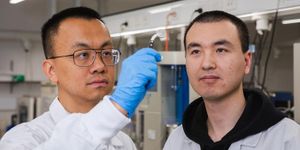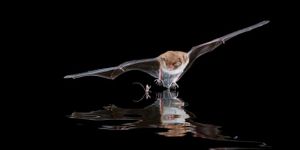A New Sensor for Rapid, Simple Skin Cancer Detection
Terahertz (THz) waves are a type of electromagnetic wave with frequencies ranging from 0.1 to 10 THz. These waves have low ionization energy and they are able to distinguish between different biomolecules based on their spectral fingerprints. Thus, they have great potential in the biomedical field.
A new tool using THz waves has been developed to detect skin cancer; it utilizes a biosensor that can identify small changes in the characteristics of cells. A variety of data is used in this method, including transmission magnitude, resonance frequency, and so-called "full width at half maximum" (FWHM) - a parameter of the spectral curve. This information is collected with asymmetric resonators in a flexible substrate, and it can provide a complete picture of tissue to reveal cancerous cells among healthy ones, and identify the degree of malignancy if cancerous cells are observed. The tool can enable earlier, rapid diagnoses. The findings have been reported in IEEE Transactions on Biomedical Engineering.
"Traditional methods for detecting skin cancer often involve expensive, time-consuming, CT, PET scans and invasive higher frequencies technologies," noted first study author Dr. Shohreh Nourinovin, a Postdoctoral Research Associate at Queen Mary University of London. "Our biosensor offers a non-invasive and highly efficient solution, leveraging the unique properties of THz waves, a type of radiation with lower energy than X-rays, thus safe for humans, to detect subtle changes in cell characteristics."
The researchers validated the biosensor with healthy and basal cell carcinoma (BCC) cells; it was able to differentiate between normal and malignant cells even at different levels. It could significantly improve outcomes if it's used to detect cancer much earlier.
"The implications of this study extend far beyond skin cancer detection," added Dr. Nourinovin. "This technology could be used for early detection of various cancers and other diseases, like Alzheimer's, with potential applications in resource-limited settings due to its portability and affordability."
"Integrating terahertz imaging technology into this type of flexible, portable, reuseable sensor could make cancer screening a quicker and more comfortable procedure for patients. We're excited to build on the potential of this breakthrough technology with future collaborative research," said seniosr study author Professor Qammer H. Abbasi, the Co-director for Communication Sensing & Imaging Hub at the University of Glasgow.
Sources: Queen Mary, University of London; IEEE Transactions on Biomedical Engineering









